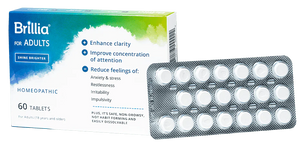Quality sleep is important to all of us. Cognitive function, memory, our mood for the day, and how we deal with stress are all tied to how much we sleep. If your child struggles with attention issues, sleep becomes that much more important. It’s why we encourage strict sleep schedules and nighttime routines. They create an optimal environment for quality sleep that will help your child succeed.
If sleep is so important, naps must be the greatest gift you can give your child with attention issues, right? Well, it’s a little more complicated than that. Naps are tools that can be helpful for your child, but they can also be problematic. Let’s look at when you should allow your child to nap, and when you should avoid them at all costs.
The Good News About Naps for Your Child
Children have a lot of demands throughout their day. Their bodies are growing, their brains are developing all while trying to pay attention in school and have a little fun. It’s no wonder they get tired. Unfortunately, a tired child is a difficult child. They become irritable, less focused and their health actually deteriorates. Naps are a quick, effective way to bring your child back to their lovely, sweet self.
Naps ensure that your child’s brain gets the rest it needs to function correctly throughout the day. They can remember more, focus better and make better choices when they are well-rested. Beyond school, some research even links exhaustion to obesity. Kids tend to eat more and make unhealthy choices when they’re overtired. So a nap is often the healthy option for your kid. They also create a peaceful home environment.
If you notice your child seems overall healthier and happier when they have naps — keep naps in their schedule! There’s no reason your child needs to be exhausted all day. But keep an eye on the length of their naps. You still want to make sure they get quality sleep at night. If your child is older than 6, keep their naps 30 minutes or shorter. Anything more than that will do more harm than good. A quick guide on age and overall sleep needs can be found < href="https://www.babycenter.com/0_how-much-sleep-do-preschoolers-and-big-kids-need_64915.bc">here.
The Bad News About Naps for Your Child
Calling naps harmful might sound dramatic, but it can be true. The sleep your child gets at night is the most impactful on their development and general mood. Too many naps during the day or naps that last too long will disrupt their quality of sleep at night. Instead of helping your child, naps can prevent them from getting the rest and rejuvenation they need to conquer their day.
If your child gets into a routine of sleeping during the day, their body won’t know that they should be sleeping at night. Their brain responds to routine and triggers that tell the body it’s time to shut down for the day. Once you throw off that internal clock, it could take weeks to get your child back on schedule.
So, Should You Let Your Child Nap?
The verdict on naps is ultimately up to you and your child. What works for you might not work for anyone else. But we do have a few pointers if you’re struggling with whether or not to let your child sleep.
First, decide whether they’re getting enough quality sleep at night. Do you have a strict sleep schedule? Are there ways you can improve your nighttime routine to promote quality sleep for your child? Are there ways to modify their bedroom so that they fall asleep quickly and deeply? Instead of jumping directly into naps, access what you can do to help them sleep better at night.
You can also try relaxation techniques instead of naps. This is especially helpful for parents of children with attention issues and high anxiety. Instead of putting them down for a nap, try a mindfulness meditation break. It recenters them, gives their brain time to relax and releases a lot of stress. Five minutes of meditation could help much more than a 30-minute nap if it’s done regularly.
And if none of that is working, try letting your child nap! The decision is up to you. Just keep an open mind and work with your child. They’ll tell you by their words and their behavior what’s working for them.







